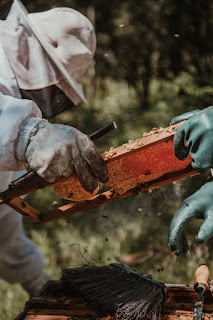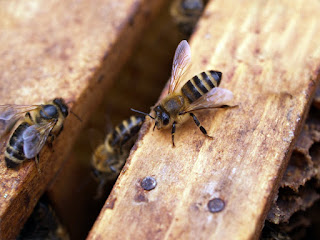Fantastic Facts About Honey Bees You've Never Heard it Before
No other insect served human needs as well as honeybees. For centuries, bees have been raised, harvested their sweet honey, and relied upon to pollinate most crops, so what are the facts that we do not know about honey bees ?
surprising facts about honey bees !
No other insect served human needs as well as honeybees. For centuries, bees have been kept, harvested, and their sweet honey, and have been relied upon to pollinate most crops. As the bees pollinate about a third of the crops consumed. Here in this article are 10 facts you may not know about honey bees.
• Bees can fly at speeds exceeding 15 miles per hour.
That may sound fast, but in the world of insects, this is slow. As the bees do not fly long distances but make short trips from flower to flower, and the small wings flap about 12 thousand times to preserve the pollen for the return flight.
• A bee colony can contain more than 60,000 bees.
The bee industry needs a lot of bees to complete it. Nurse bees look after the young bees while the queen's escorts wash and feed them. As for the guard bees, they stand watching at the door. Workers build beeswax so that the queen lays eggs and also stores bees. The bees specialized in transporting the dead bees (undertakers) away from the hive. Foragers must bring in enough pollen and nectar to fully feed the colony.
• A virgin worker bee produces about 1/12 teaspoon of honey throughout its life.
For bees, there is power in number. From spring to fall, workers must produce about 60 pounds of honey to maintain the entire colony, to tens of thousands of workers to complete the work.
• The queen stores sperm for her life.
The queen can live from 3-4 years. But her biological clock is ticking faster than you might expect. Only within a week of the Queen's death. A new queen flies from the hive to mating. If she does not do so within 20 days, it will be too late and she will lose her ability to mate. But if this is successful, she will not need to mate again. Where they keep sperm inside them to fertilize eggs throughout their life.
• The queen lays more than 1500 eggs per day and she can lay more than 1 million eggs in her lifetime.
Only within 48 hours after mating does the queen begin her eternal mission of laying eggs. In fact, she has no other time to perform other tasks and thus the Queen's escorts do all the work of feeding her and taking care of her.
• Bees use the most complex symbolic language of any other animal on Earth.
The bee has one million neurons in its brain that amount to a mere cube of a millimeter. And every single one of them is used. Workers carry out many different roles throughout their life. Foragers must find flowers, determine their value as a source of food, and transfer them to the entire colony, and share details of their information about their flowers with other foragers. Karl Vot Frisch was awarded the Nobel Prize in Medicine in 1973 for his discovery of the code for the bee language, the language of "the waggle dance."
• Male bees die immediately after the queen is fertilized.
The male bee performs one task which is to transfer the sperm to the queen. And after doing this job he dies.
• Bees can maintain a constant hive temperature of around 93 degrees Fahrenheit throughout the year.
When the temperature drops, all the bees gather to form a tight fitting group to keep the hive warm. Workers clustered around the queen to isolate her from the cold outside world. In the summer, the workers ventilate the air inside the hive with their wings to protect the queen and the incubators from the heat. The buzzing of bees caused by the flapping of their wings can be heard from several feet away from the hive.
• Bees produce honey from a special gland in their abdomen.
The smallest bee worker is the one who makes beeswax. Eight pairs of glands paired on the underside of the abdomen produce wax droplets that harden into flakes when exposed to air. Workers must work on wax flakes with their mouths to soften them into a material capable of making honey on them.
• The industrious worker bees can plant 2000 flowers a day.
Foragers cannot make pollen from many flowers simultaneously. Therefore, 50 - 100 flowers are visited before heading to the hive. In the remainder of the day, these flights are repeated. These hard-working foragers last for only three weeks.







